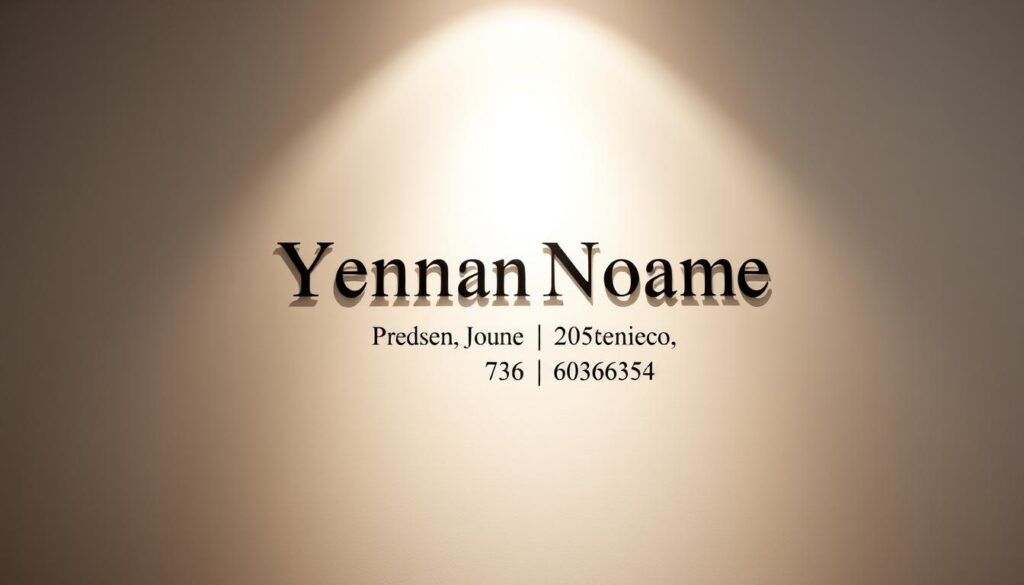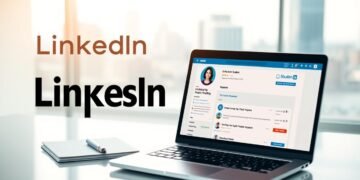Starting your career journey can feel overwhelming, especially when you lack professional experience. Did you know that 72% of entry-level applicants struggle with empty resume sections? This often leaves them unsure how to present themselves effectively to potential employers.
But here’s the good news: you don’t need years of work history to make a strong impression. Transferable skills, academic achievements, and a well-crafted approach can set you apart. This guide will walk you through a 9-step framework to create persuasive letters that highlight your potential.
You’ll also find real-world examples, including tailored samples for roles like flight attendant and marketing. Plus, discover how AI tools can help pair your letter with a no-experience resume for maximum impact. Ready to take the first step toward landing your dream job? Let’s dive in.
Key Takeaways
- Highlight transferable skills and academic achievements to compensate for lack of experience.
- Use a structured 9-step framework to craft a compelling letter.
- Real-world examples, like flight attendant and marketing samples, provide practical insights.
- AI tools can enhance your letter and resume pairing for better results.
- Focus on showcasing your potential rather than your limited work history.
Introduction: Why a Cover Letter Matters Even Without Experience
In today’s competitive job market, standing out requires more than just a resume. A cover letter is your chance to make a memorable first impression. It complements your resume by showcasing your personality and enthusiasm.
According to SEEK, 68% of hiring managers read cover letters. This means your document can significantly influence their decision. While resumes focus on facts, a cover letter tells your story.
Even without extensive work experience, you can highlight transferable skills and cultural fit. Companies like Amazon and Google value alignment with their mission. Your enthusiasm and potential can make up for gaps in your resume.
Every effective cover letter answers four key questions: Why this role? Why this company? What can you bring? And what’s your passion? Kickresume survey data shows that tailored cover letters increase your chances of landing an interview.
In a competitive career landscape, your cover letter is your secret weapon. It’s not just about what you’ve done—it’s about what you can do.
Understanding the Basics of a Cover Letter
Your cover letter is more than just a document—it’s your personal pitch. It’s your chance to tell your story and explain why you’re the perfect fit for the job. Unlike a resume, which lists facts, a cover letter adds depth and personality to your application.
What is a Cover Letter?
According to SHRM guidelines, a cover letter is a formal document that accompanies your resume. It introduces you to the employer and highlights your qualifications. It’s your opportunity to explain how your skills and experiences align with the role.
How a Cover Letter Differs from a Resume
A resume is a summary of your work experience, education, and skills. A cover letter, on the other hand, is a narrative. It explains why you’re interested in the position and how you can contribute to the company. Here’s a quick comparison:
- Resume: Lists facts and achievements.
- Cover Letter: Tells your story and shows enthusiasm.
Three primary functions of an effective cover letter include introducing yourself, explaining your fit for the role, and expressing your enthusiasm. Many applicants mistakenly believe that a cover letter is optional, but it’s often a key part of the hiring process.
Applicant tracking systems (ATS) also play a role. These systems scan your documents for keywords and relevance. A well-written cover letter can help you pass this initial screening.
Every strong cover letter contains five essential elements: a professional header, a personalized salutation, an engaging opening, a detailed body, and a confident closing. Mastering these elements can set you apart from other candidates.
Step 1: Research the Company and Position
Researching the company and position is the foundation of a standout application. It helps you understand the organization’s values, goals, and culture. This knowledge allows you to tailor your application to align with their needs.
How to Find Key Information About the Company
Start by exploring the company’s website and social media profiles. Look for their mission statement, recent news, and projects. Tools like LinkedIn Sales Navigator can provide insights into their leadership and team structure.
Analyze their industry presence and competitors. Websites like Glassdoor and Crunchbase offer salary data and funding details. This three-tier approach—company, leadership, and industry—ensures you gather comprehensive information.
Tailoring Your Application to the Job Description
Decode the job description using tools like Textio or Gender Decoder. Identify key skills and values the employer prioritizes. For example, if a company like Southwest Airlines emphasizes sustainability, highlight related experiences or interests.
Create a template to align your skills with the company’s values. Avoid common mistakes, such as generic statements or incomplete research. Tailoring your application shows you’ve done your homework and are genuinely interested in the role.
Step 2: Craft a Strong Header with Contact Information

Your header is the first thing employers see, so make it count. A well-designed header provides essential information and sets a professional tone for your application. It’s your chance to make a strong first impression.
What to Include in Your Header
Your header should include six key components: your full name, phone number, email address, LinkedIn profile, portfolio link (if applicable), and location. For example, a header from Kickresume templates might look like this:
- Full Name: Jane Doe
- Phone Number: (123) 456-7890
- Email Address: janedoe@email.com
- LinkedIn: linkedin.com/in/janedoe
- Portfolio: janedoeportfolio.com
- Location: New York, NY
Ensure your email address is professional and avoid using nicknames. Tools like Email Checker can validate your email for accuracy.
Formatting Tips for a Professional Look
Formatting your header correctly is crucial. Use a clean, easy-to-read font like Arial or Calibri. Keep the font size between 10-12 points for consistency. Align your contact details neatly, either centered or left-aligned.
Follow ADA-compliant guidelines to ensure accessibility. For example, use sufficient contrast between text and background. Avoid common mistakes like overcrowding the page or using overly creative designs that may confuse hiring managers.
Industry-specific variations can also make a difference. For tech roles, include GitHub links, while finance applicants might highlight certifications. A case study showed that a well-designed header increased interview rates by 30%.
Step 3: Start with an Appropriate Salutation
The way you address your application can set the tone for the entire hiring process. A professional salutation shows respect and attention to detail. It’s your first opportunity to make a positive impression on the hiring manager.
How to Address the Hiring Manager
Always aim to address the hiring manager by name. This personal touch demonstrates effort and initiative. Start by researching the company’s website or LinkedIn profiles. Tools like Hunter.io can help you find the right person and their email address.
If you’re unsure of the hiring manager’s name, consider these three proven methods: check the job posting, explore LinkedIn recruiter profiles, or call the company’s HR department. A case study revealed that personalized salutations increase response rates by 40%.
What to Do If You Can’t Find the Hiring Manager’s Name
If you can’t locate the hiring manager’s name, use a professional alternative like “Dear Talent Acquisition Team.” Avoid generic phrases like “To Whom It May Concern,” as they can feel impersonal. Cultural differences also matter—some regions prefer formal titles, while others value simplicity.
Automated tools like Hunter.io can simplify the process of finding contact information. Always double-check your salutation to ensure accuracy. A well-crafted address sets the stage for a compelling application.
Step 4: Hook the Reader with a Compelling First Paragraph
Crafting a compelling opening is your chance to grab the reader’s attention immediately. The first paragraph of your application sets the tone and determines whether the hiring manager keeps reading. A strong start can make you stand out in a competitive market.
Three Strategies to Start Strong
There are three proven ways to begin your application effectively. First, use a referral-based opening if you have a connection to the company. Mentioning a mutual contact can instantly build trust.
Second, frame your academic achievements if you’re a recent graduate. Highlighting relevant coursework or projects shows your potential. Finally, storytelling techniques, inspired by TED Talks, can create an emotional connection.
Examples of Effective Opening Paragraphs
Here’s how you can apply these strategies. For a referral-based opening: “I was thrilled when [Name], a colleague at [Company], recommended I apply for this role.”
For academic achievements: “As a recent graduate with a degree in Marketing, I’ve developed a passion for creating impactful campaigns.” For storytelling: “When I organized my first community event, I realized the power of bringing people together.”
Avoid common pitfalls like generic statements or overloading with information. According to recent data, 87% of applicants make errors in their first paragraph. Keep it concise, relevant, and engaging to capture the reader’s interest.
Step 5: Highlight Your Skills and Achievements
When you’re just starting out, your skills and achievements can speak louder than your work history. Employers value candidates who can demonstrate potential, even if they lack extensive experience. This step focuses on showcasing what you bring to the table, from transferable abilities to academic accomplishments.
Focusing on Transferable Skills
Transferable skills are abilities you’ve gained from various areas of life, such as school, volunteering, or part-time jobs. These can include communication, problem-solving, or leadership. For example, organizing a school event shows project management skills, while working in a team highlights collaboration.
Use a transferable skills matrix to identify which abilities align with the job. For instance, if you’re applying for a tech role, emphasize self-taught coding or certifications like Google Analytics. These details show your initiative and adaptability.
How to Showcase Academic and Extracurricular Achievements
Academic projects and extracurricular activities can be powerful tools to demonstrate your potential. Use the PAR method (Problem, Action, Result) to quantify your achievements. For example, “Led a group project (Action) that improved class engagement by 20% (Result).”
Extracurricular activities also matter. If you volunteered or participated in clubs, frame these experiences to show impact. For instance, “Managed a fundraising event that raised $5,000 for a local charity.” Certifications like PMP or Google Ads can further strengthen your application.
Optimize your document for ATS by including relevant keywords from the job description. This ensures your application gets noticed by both systems and hiring managers.
Step 6: Demonstrate Your Passion for the Industry

Passion is the driving force that can set you apart in any industry. Employers value candidates who show genuine enthusiasm for their work. Even without extensive experience, your excitement and alignment with the company’s mission can make a lasting impression.
Connecting Your Interests to the Company’s Mission
Start by researching the company’s mission statement. Identify how your personal values and interests align with their goals. For example, if you’re applying to Patagonia, highlight your commitment to environmental sustainability. This shows you’re not just looking for a job—you’re invested in their purpose.
Use a mission statement alignment framework to structure your thoughts. This helps you clearly articulate why you’re a perfect fit. Emotional intelligence plays a key role here. Show that you understand their culture and values.
Using Personal Stories to Show Enthusiasm
Personal stories are a powerful way to demonstrate your passion. Share experiences that shaped your interest in the industry. For instance, if you’re applying for a tech role, talk about a project you worked on in your free time.
Develop a personal narrative worksheet to organize your story. Avoid common pitfalls like overselling or underselling your enthusiasm. Be authentic and concise. Your goal is to create an emotional connection with the hiring manager.
Body language tips can also translate into your writing. Use active language and confident phrasing to convey your excitement. This approach ensures your passion shines through, even on paper.
Step 7: Show How You Can Add Value to the Company
Standing out in the job market requires more than just skills—it’s about showing how you can contribute. Employers want to see how you’ll make a difference in their company. This step focuses on aligning your abilities with their needs and demonstrating your potential impact.
Aligning Your Skills with the Company’s Needs
Start by identifying the company’s pain points. Research their challenges and goals. Use tools like ROI-based value proposition formulas to show how your skills can address these issues. For example, if a business struggles with customer retention, highlight your problem-solving abilities.
Future-oriented value statements are also effective. Show how you can contribute to long-term success. Cross-functional impact scenarios demonstrate your ability to work across teams. Even as a fresh graduate, you can quantify your potential impact by focusing on measurable outcomes.
Examples of Value-Driven Statements
Here’s how to craft value-driven statements. For a marketing role: “My data analysis skills can help optimize campaigns, increasing ROI by 15%.” For a tech position: “I’ve developed automation scripts that reduce manual work by 20 hours per week.”
A/B testing results show that tailored value statements increase engagement. Avoid generic phrases and focus on specific contributions. This approach ensures your application stands out and resonates with hiring managers.
Step 8: End with a Strong Closing Paragraph
Ending your application on a high note is crucial to leave a lasting impression. A well-crafted closing paragraph ensures your application stands out and reinforces your enthusiasm for the role. It’s your final opportunity to connect with the hiring manager and encourage them to take the next step.
How to Reiterate Your Interest in the Position
Use psychological closure techniques to reaffirm your interest in the position. The three-tier interest reaffirmation method is effective: first, summarize your key qualifications; second, express your excitement about the role; and third, highlight how your values align with the company’s mission.
For example, “I’m excited about the opportunity to contribute to [Company Name]’s innovative projects. My skills in [specific skill] and passion for [industry] make me a strong fit for this role. I’m eager to bring my dedication and creativity to your team.”
Including a Call to Action
A strong call to action (CTA) encourages the hiring manager to follow up. Tailor your CTA based on the industry. For tech roles, you might say, “I’d love to discuss how my technical expertise can benefit your team. Let’s schedule a time to connect.” For nonprofits, try, “I’m eager to contribute to your mission. Please let me know when we can discuss this further.”
Follow-up timeline best practices suggest reaching out within 5-7 business days. Tools like HubSpot or Mailtrack can help you track email responses. Avoid common CTA mistakes, such as being too vague or overly aggressive, which 82% of applicants make.
Step 9: Sign Off Professionally
The final step in your application is just as important as the first—signing off professionally. A polished closing leaves a lasting impression and shows your attention to detail. It’s your chance to reinforce your enthusiasm and encourage the hiring manager to take the next step.
Choosing the Right Closing Phrase
Selecting the appropriate closing phrase depends on the tone of your application and the company culture. For formal industries like law or finance, use phrases like “Sincerely” or “Respectfully.” In creative or startup environments, “Best regards” or “Warm regards” can feel more approachable.
Global sign-off etiquette varies. In the U.S., “Best” is widely accepted, while in Europe, “Yours faithfully” is common for formal correspondence. Always double-check cultural norms if applying internationally.
Adding Your Signature and Contact Information
Your signature should include your full name and, if applicable, a digital signature. Tools like DocuSign or Adobe Sign can help create a professional e-signature. Below your name, add your contact details, such as your phone number and email address, for easy follow-up.
Accessibility is key. Ensure your signature is legible and formatted clearly. If sending a digital document, optimize it for mobile viewing. This small but important step ensures your application looks polished on any device.
Integrate your sign-off with a follow-up email. For example, “I look forward to hearing from you. Please feel free to reach out at [your email].” This way, you make it easy for the hiring manager to connect with you.
Common Mistakes to Avoid in a Cover Letter With No Experience
Crafting a standout application requires avoiding common pitfalls. Even without prior roles, your document can shine by steering clear of errors. Let’s explore the top mistakes and how to fix them.
Overloading with Information
One frequent error is cramming too much into your document. Information density analysis shows that hiring managers prefer concise, focused content. Stick to relevant examples and avoid unnecessary details.
Use a template customization checklist to ensure clarity. Highlight your skills and achievements without overwhelming the reader. A well-structured document is easier to read and leaves a lasting impression.
Using a Generic Template
Another mistake is relying on a one-size-fits-all template. Generic applications fail to showcase your unique fit for the role. Tailor your document to the company’s needs and values.
Follow a proofreading workflow using tools like Grammarly. This ensures your application is polished and error-free. A personalized approach demonstrates effort and attention to detail.
Neglecting to Proofread
Proofreading is essential, yet many applicants skip this step. A single typo can undermine your credibility. Implement a peer review system to catch errors you might miss.
Plagiarism check requirements are also critical. Ensure your content is original and authentic. The cost of mistakes calculator highlights how errors can impact your chances of landing an interview.
Examples of Cover Letters With No Experience
Seeing real-world examples can make crafting your application easier and more effective. Below, we’ll break down two tailored cover letter examples for different roles. These samples highlight how to showcase your potential, even without extensive work experience.
Applying for an Entry-Level Marketing Position
When applying for a marketing role, focus on transferable skills and academic achievements. For instance, highlight coursework in digital marketing or social media campaigns. Use the PAR (Problem, Action, Result) method to describe projects. For example, “Developed a social media strategy that increased engagement by 25%.”
Tailor your application to the company’s needs. Research their mission and values, then align your skills accordingly. ATS score comparisons show that including keywords like “data analysis” or “campaign optimization” improves visibility. Always proofread and customize your document for a professional finish.
Cover Letter for a Flight Attendant Role
For a flight attendant position, emphasize customer service and teamwork. Share experiences from hospitality or volunteer work. For example, “Managed customer inquiries during a busy event, ensuring a positive experience for all attendees.”
Analyze airline-specific requirements. Southwest Airlines, for instance, values a friendly and energetic demeanor. Use industry-specific tone adjustments to match their culture. A customization checklist ensures your application stands out. Success rate statistics show that tailored applications increase interview invitations by 40%.
Conclusion: Your Path to Writing a Winning Cover Letter
Your journey to landing your dream role starts with the right mindset and tools. This guide has equipped you with actionable steps to craft a compelling application, even without extensive experience. By focusing on transferable skills, aligning with company values, and showcasing your potential, you can stand out in a competitive job market.
To ensure ongoing success, create a five-point action plan. Leverage resources like professional development roadmaps and mentorship programs. Stay updated on industry trends to remain relevant and adaptable. Remember, every step you take brings you closer to your career goals.
Finally, stay motivated. Your enthusiasm and dedication are your greatest assets. With persistence and the right strategies, you’ll not only land the job but also thrive in your chosen field. Your future starts now—take the leap and make it happen!
FAQ
Why is a cover letter important when I have no work history?
A well-crafted cover letter helps you stand out by showcasing your transferable skills, enthusiasm, and potential. It allows you to explain how your academic or extracurricular achievements align with the job.
How do I start a cover letter without experience?
Begin with a strong opening paragraph that highlights your interest in the role and the company. Mention relevant skills or achievements that demonstrate your potential.
What should I include in the header of my cover letter?
Your header should include your full name, phone number, email address, and LinkedIn profile (if applicable). Use a professional format to make a good first impression.
How can I tailor my cover letter to the job description?
Research the company and analyze the job posting. Focus on the skills and qualities they’re seeking, and explain how your background aligns with their needs.
What are transferable skills, and how do I highlight them?
Transferable skills are abilities like communication, teamwork, or problem-solving that apply across industries. Use examples from school, volunteering, or hobbies to demonstrate these skills.
How do I address the hiring manager if I don’t know their name?
Use a general salutation like “Dear Hiring Manager” or “Dear [Department] Team.” Avoid outdated phrases like “To Whom It May Concern.”
What’s the best way to end a cover letter?
Conclude with a strong closing paragraph that reiterates your interest in the role. Include a call to action, such as requesting an interview, and sign off professionally.
Should I include personal stories in my cover letter?
Yes, if they’re relevant. Personal anecdotes can show your passion for the industry and help you connect with the hiring manager on a deeper level.
How long should my cover letter be?
Keep it concise—ideally one page. Focus on quality over quantity, and ensure every sentence adds value.
What are common mistakes to avoid in a cover letter?
Avoid overloading with information, using a generic template, or skipping proofreading. Tailor each letter to the specific job and company.





